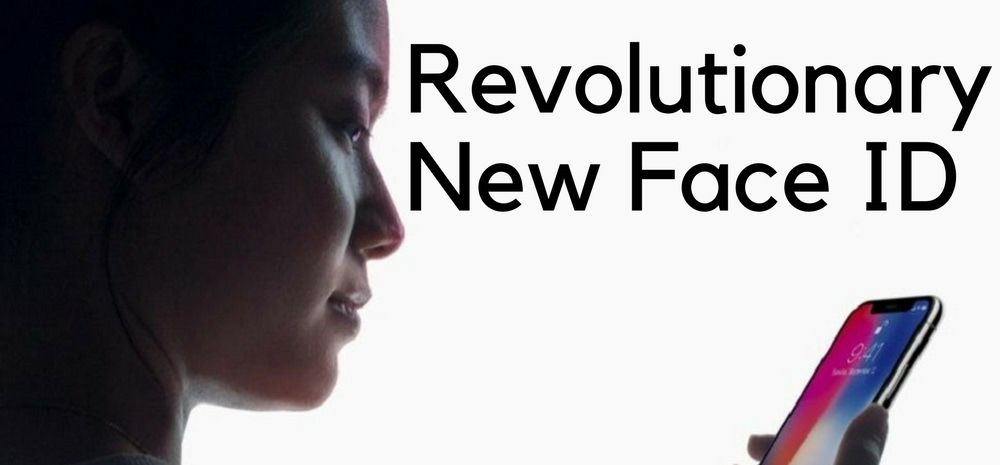iPhone X Triggers Dawn Of Facial Recognition Apps – 3 Effects on Society
iPhone X features the most advanced Facial Recognition yet on a smartphone

Apple is the standard against which advances and predictions of technology industry is calibrated and compared. Be it touch screens or ecosystem of applications, it has always been Apple which showed the path of the future.
And yesterday, Apple changed a lot of industry protocols, when they replaced TouchID mode of authentication in their newest iPhone X, and replaced that with FaceID. This is a new form of facial recognition system, which will help users to unlock their phones. The iPhone X user now just needs to bring the phone right in front of his/her face to unlock the phone.
This new trend of using facial recognition tech is certainly not new, but yes, it is now being widely used.
As per our prediction, the new facial recognition technology, which has just been adopted by Apple, can change several things about our society.
And, there are both good and bad aspects to it.
The Concern: Safety & Security Of Gadgets
In their recent iPhone X smartphone, Apple has used a high end infrared system called TrueDepth, which projects a grid of 30,000 invisible light dots on the person’s face, in order to identity the person, and implement FaceID to unlock the phone (and take permission to allow access of apps and games as well).
Apple exec Phil Schiller said during the launch, “With the iPhone X, your iPhone is locked until you look at it and it recognizes you. Nothing has ever been more simple, natural, and effortless,”
Certainly one interesting usage of facial recognition, but the trouble is, this can be exploited and manipulated to break the security.
For instance, in 2009, few security researchers were able to unlock a similar facial recognition based grid by placing a photo of the user printed on paper, right in front of the camera. Of course, that was a webcam on a Windows OS, but facial recognition is the common denominator here.
However, as late as 2015, Popular Science writer Dan Moren was able to beat the a Alibaba facial recognition system by using a video of himself blinking.
In short, as soon as a system or 3D printer is able to recreate a face which a computer can identify, the security is broken.
And, the failure experienced by Apple during the demonstration of this FaceID on iPhone X is not instilling any further confidence into the whole concept.
The Good Effect: Crime Reduction
Advances in facial recognition has some pretty cool good effects as well.
Take for instance a breakthrough achieved by a team of Indian students from NIT Warangal.
G. Meghana Reddy and Devendra Patil who are final year B. Tech students, have written a research paper which will be presented in Venice in October, and is right now going viral in whole Europe.
Titled as ‘Disguised face identification (DFI) with facial key points using spatial fusion convolutional network’, the research paper proposes a scenario wherein a camera would be able to identify criminals even if they are hiding behind scarf, glasses, mask, beard, cap or a combination of all these.
Reddy said, “This network detects the original face within five seconds. We could achieve 70% of accuracy and are still working on the project,”
Now, combine this research with the immense amount of facial data gathered by Aadhaar and Apple gadgets, and the cops can crack any crime within seconds!
The Evil Effect: RIP Privacy
At the same time, advancement in facial recognition technology is prompting researchers to come up with evil apps, which threatens to wipe out privacy of entire human species.
Michal Kosinski, a Stanford University professor has suggested that AI in facial recognition can easily dig out concealed information about a person, just by reading the face.
And this can be dangerous, because the AI powered facial recognition software can now tell your political inclinations, religious priorities and even sexual orientation.
As per the study conducted by Michal, computer algorithm can correctly distinguish between straight and gay men with 81% accuracy for men and 74% accuracy for women.
Michal said, “The face is an observable proxy for a wide range of factors, like your life history, your development factors, whether you’re healthy.”
This machine intelligence and facial recognition experiment was published in Journal of Personality and Social Psychology, and reported by The Economist.
Now, once again combine this algorithm with massive facial database of citizens, and hand this knowledge base to a dictator who hates gays and LGBTs.
You can very well imagine the consequences.
Do share your opinions on the dawn of facial recognition technologies, and the side-effects, by commenting right here.

Hi trak in, I saw read your concern about facial recognition but, 3d printers can create fingers too not only face. If Apple saw this kind of hacks they will improve that also. And every single year they come up with something new. So don’t worry